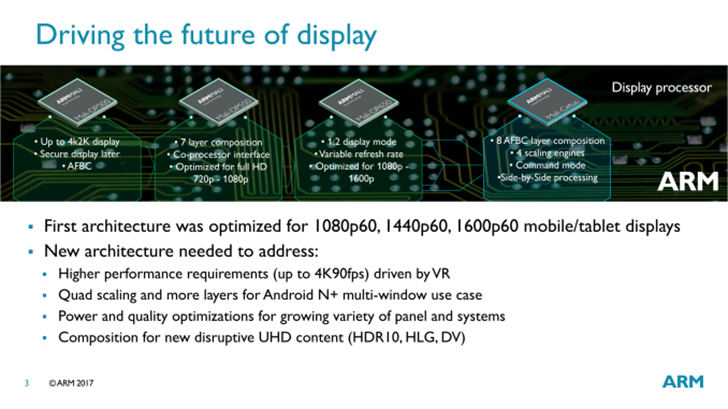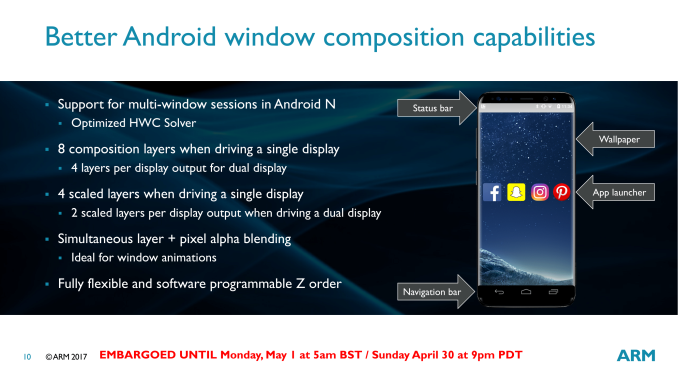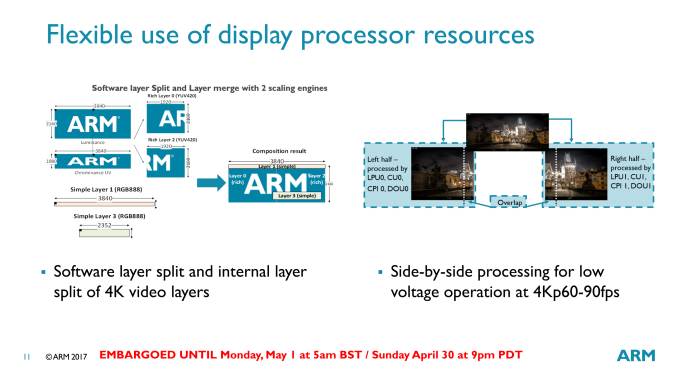Most Android devices use ARM processors, usually with ARM's 'Mali' display unit to render graphics. Usually every new Mali upgrade is a small incremental improvement over the previous design, but not this time around. ARM has taken the wraps off 'Mali-Cetus,' the company's next-generation display processor.
Cetus is a completely new architecture, designed with higher-resolution displays and multi-tasking in mind. For example, the new composition unit can composite 8 UI layers (up from 7 on previous processors), and it can scale up to four of them with its four scaling engines. This will be incredibly helpful for Android 7.0 Nougat's multi-tasking functionality, where each app requires its own layer.
As far as image processing power goes, ARM is advertising Mali-Cetus to work with up to 4Kx2K screens at up to 120Hz. Cetus achieves this by splitting up 4K video layers to different sub-units, which has the added benefit of improved battery life.
Also new is a "co-processor interface," which will allow OEMs to expand Mali graphics with their own hardware. For example, ARM's new Assertive Display block uses this interface to provide HDR support. It will likely be a while before we see Android devices with the new Mali-Cetus architecture, but I'm excited to see how noticeable the performance boost will be.
Source: AnandTech



